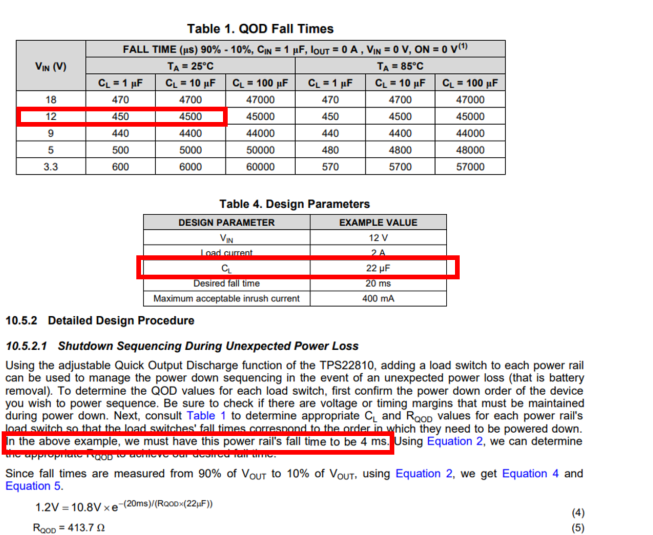Hello, I am going to use TPS22810 for load switch.
After reading datasheet, I don't understand something.
Table1. is datasheet's QOD fall time table.
and below, there says " In the above example we must have this power rail's fall time to be 4ms.
Refer to table, if fall time to be 4ms with Vin 12V, then CL 's value would be about 10uF. (10uF for 4500us = 4.5ms)
But in the datasheet, they choosed CL for 22uF.
Then I think this will make fall time about 10ms.
Am I understanding something wrong?
And in addition,
what is normally people use value for desired fall time and max inrush current?
Are there any some kind of rule of thumb like that fall time and max inrush current based on load current or any parameter?
(For example, normally when choosing buck's inductor ripple current as 30%. )
Thanks.


